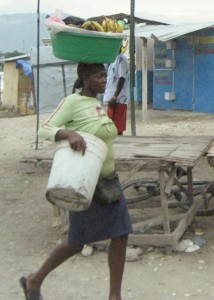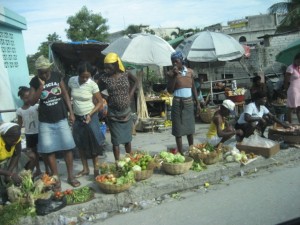January 3, 2013
![2698[1]](https://blog.itscactus.com/wp-content/uploads/2012/12/26981-295x300.jpg) I wasn’t going to do this. I was going to do four articles on Voodoo. Four. No more. But to ignore the whole idea of zombies in four articles on Voodoo would be to ignore the elephant in the room. OF COURSE THERE ARE ZOMBIES IN VOODOO! I just wasn’t going to go into zombies because I thought they were too creepy and “out there,” running contrary to the kinder, gentler side of Voodoo practice that I was trying to convey. But then I read an article entitled, “A Zombie is a Slave Forever,” in the Oct. 30, 2012 edition of the New York Times by Amy Wilentz. A journalist and professor of literary journalism at UCal-Irvine, Wilentz described zombies so reasonably that they became, to me at least, more historically interesting than creepy. So here we are, with a fifth and absolutely final article in the “Voodoo Inspired” series. (Really.)
I wasn’t going to do this. I was going to do four articles on Voodoo. Four. No more. But to ignore the whole idea of zombies in four articles on Voodoo would be to ignore the elephant in the room. OF COURSE THERE ARE ZOMBIES IN VOODOO! I just wasn’t going to go into zombies because I thought they were too creepy and “out there,” running contrary to the kinder, gentler side of Voodoo practice that I was trying to convey. But then I read an article entitled, “A Zombie is a Slave Forever,” in the Oct. 30, 2012 edition of the New York Times by Amy Wilentz. A journalist and professor of literary journalism at UCal-Irvine, Wilentz described zombies so reasonably that they became, to me at least, more historically interesting than creepy. So here we are, with a fifth and absolutely final article in the “Voodoo Inspired” series. (Really.)
According to Wilentz, zombies are the very logical offspring of New World slavery, combining old African religious beliefs and the pain of the merciless, cold-blooded French colonial system of slavery in seventeenth century Saint Domingue, now Haiti. In the slaves’ view, the only escape from grueling servitude on sugar plantations was death, which was seen as a return to Africa, or ”lan guinée,” a phrase which even today means “Heaven” in Haitian Kreyol. Thus, death became a desirable means of attaining freedom and suicide became morbidly commonplace.
Naturally, the death of a slave was very costly to slave owners, whose accounting ledgers would reflect not only loss of productivity, but also of property. To ingratiate themselves to the owners then, slave drivers – themselves slaves and often Voodoo priests – put down the practice of suicide with the threat of zombification. Zombies, being soulless wanderers, are unable to get to lan guinee, the lush, languorous African heaven, and are thereby stuck in eternal bondage on Saint Domingue. Logically, the threat of becoming a zombie was an effective deterrent from self-inflicted death, as evidence of “real zombies” could be observed in the blank stares of
![2637[1]](https://blog.itscactus.com/wp-content/uploads/2012/12/26371-163x300.jpg)
Two zombies, by Louis Eric
broken slaves who toiled in the fields in endless, unresponsive misery.
In traditional Voodoo belief, the soul is transported to lan guinee at the discretion of Baron Samedi, the Loa of Death. To offend the Baron is to be doomed
to a zombie state in which the actions of the soulless body are entirely dictated by a mortal master. Baron Samedi is represented by a male figure in a black suit and hat with dark glasses. He is low, foul-mouthed, and vicious.
Centuries later, it was no coincidence that “Papa Doc” Duvalier, Haiti’s notorious dictator from 1957-1971, used the imagery of the Baron and zombies to instill fear in his own people. Like the Baron, he often dressed in a black top hat and business suit, and wore dark sunglasses. His secret police, the Tontons Macoutes, maintained order with a violent, seemingly blind obedience and were taken by the populace to be zombies under the dictator’s control. Of course, this assumption was used to Duvalier’s advantage and no pains were taken to reassure the public.
As can be plainly seen, zombie-ism in Voodoo has roots that are both historical and credible and it is pop culture that has applied the hyperbole. Amy Wilentz does a superb job of giving clarity to the subject and her forthcoming book, “Farewell Fred Voodoo” promises to more of the same on the broader topic of Haiti’s day-to-day struggle for survival. It comes out on January 8th but is available now for pre-order here http://www.amazon.com/Farewell-Fred-Voodoo-Letter-Haiti/dp/1451643977/ref=sr_1_1?ie=UTF8&qid=1355325883&sr=8-1&keywords=farewell+fred+voodoo
Order up – we can do cyber book club!
Last in the series, “Voodoo Inspired”
Contributed by Linda for Beyond Borders/It’s Cactus
![rnd458[1]](https://blog.itscactus.com/wp-content/uploads/2013/01/rnd4581-300x294.jpg)




![rnd292[1]](https://blog.itscactus.com/wp-content/uploads/2013/01/rnd2921-300x297.jpg)
![2483[1] by Louiceus Antelus](https://blog.itscactus.com/wp-content/uploads/2013/01/248312-300x157.jpg)




![rnd383[1]](https://blog.itscactus.com/wp-content/uploads/2012/12/rnd3831-280x300.jpg)
![2698[1]](https://blog.itscactus.com/wp-content/uploads/2012/12/26981-295x300.jpg) I wasn’t going to do this. I was going to do four articles on Voodoo. Four. No more. But to ignore the whole idea of zombies in four articles on Voodoo would be to ignore the elephant in the room. OF COURSE THERE ARE ZOMBIES IN VOODOO! I just wasn’t going to go into zombies because I thought they were too creepy and “out there,” running contrary to the kinder, gentler side of Voodoo practice that I was trying to convey. But then I read an article entitled, “A Zombie is a Slave Forever,” in the Oct. 30, 2012 edition of the New York Times by Amy Wilentz. A journalist and professor of literary journalism at UCal-Irvine, Wilentz described zombies so reasonably that they became, to me at least, more historically interesting than creepy. So here we are, with a fifth and absolutely final article in the “Voodoo Inspired” series. (Really.)
I wasn’t going to do this. I was going to do four articles on Voodoo. Four. No more. But to ignore the whole idea of zombies in four articles on Voodoo would be to ignore the elephant in the room. OF COURSE THERE ARE ZOMBIES IN VOODOO! I just wasn’t going to go into zombies because I thought they were too creepy and “out there,” running contrary to the kinder, gentler side of Voodoo practice that I was trying to convey. But then I read an article entitled, “A Zombie is a Slave Forever,” in the Oct. 30, 2012 edition of the New York Times by Amy Wilentz. A journalist and professor of literary journalism at UCal-Irvine, Wilentz described zombies so reasonably that they became, to me at least, more historically interesting than creepy. So here we are, with a fifth and absolutely final article in the “Voodoo Inspired” series. (Really.)![2637[1]](https://blog.itscactus.com/wp-content/uploads/2012/12/26371-163x300.jpg)